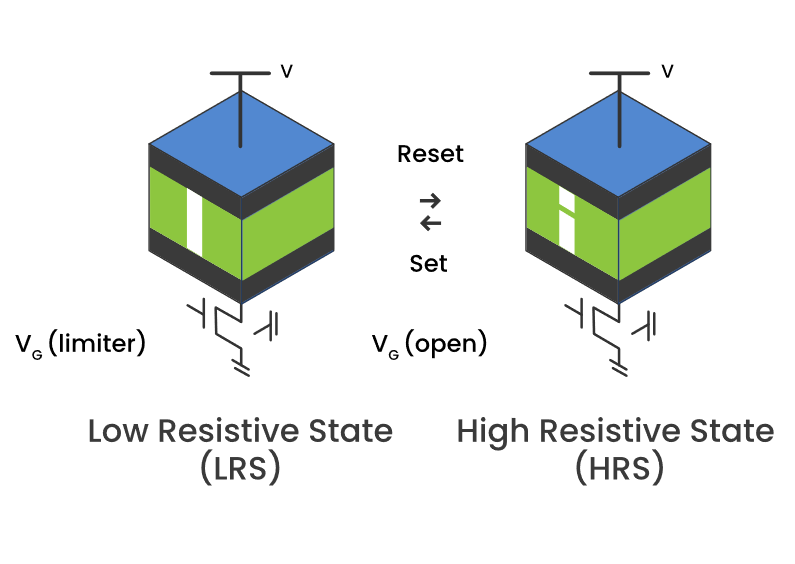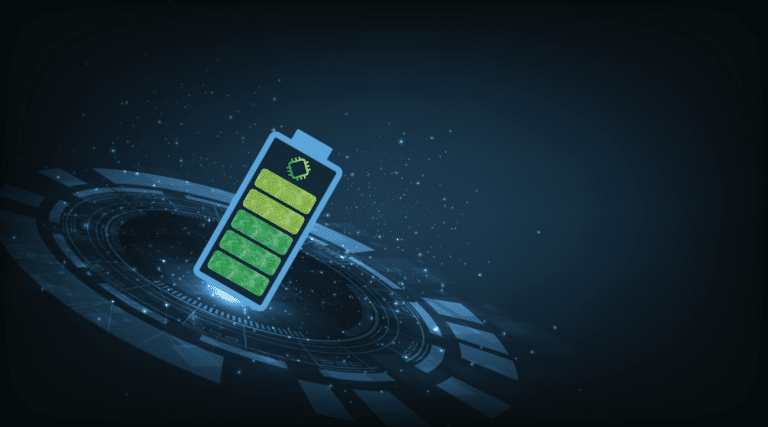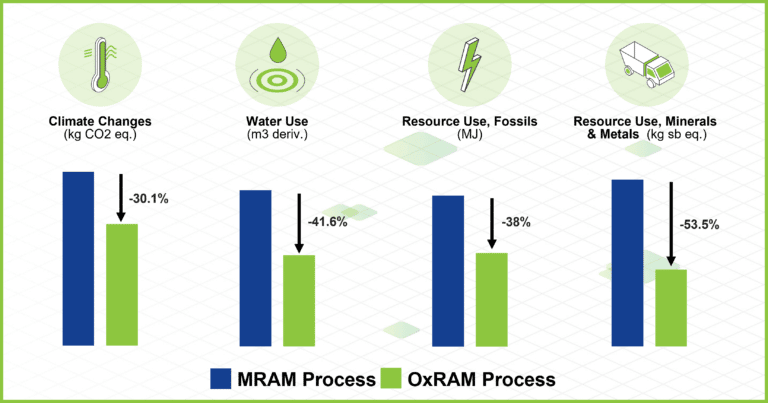I’ve been thinking a lot lately about the concept of endurance in my preparation for a half marathon in the Dead Sea race, and also as I start training towards my first full marathon of 42.195 kilometers three months from now. To run such long distances, high endurance is one of the most important things to focus on. Of course, it helps if you start with the right physical attributes for distance running, but that is definitely not enough. High persistence, strength and resistance training are key factors for increasing endurance.
Endurance is also one of the most important parameters for memory technology. As memory developers, one of Weebit’s key priorities is ensuring high endurance, balanced with other critical factors such as data retention.
The importance of endurance and retention
The Non-Volatile Memory (NVM) inside a system is responsible for reliably and securely storing firmware and important data such as operating system files, application data and user data. Not only must the NVM retain that data for a system’s lifetime; it must maintain consistent performance levels to ensure that applications continue to run smoothly. This means that high endurance and data retention are critical. Devices with higher endurance can serve and be used for broader use cases and applications.
Data retention
As you probably know from our previous posts, NVMs like ReRAM (RRAM) can retain data even when powered off. This is step one when it comes to data retention! Beyond that, when we talk about a memory’s data retention time, we refer to how long stored data can be saved on the device at a specified temperature. The retention of most NVM devices is measured at 10 years @ 85⁰C.
While most NVM technologies can’t normally achieve such retention at higher temperatures, Weebit ReRAM can retain data reliably at high temperatures for longer than required, making our ReRAM a great fit for a broad range of industrial and other applications.
Endurance in non-volatile memories
In NVM technologies, endurance is a measure of how many times data can be reliably written and rewritten to the memory cells before the device wears out or becomes unreliable. NVM devices must reliably retain data and code for long periods of time; however, as data is written/erased/re-written, the storage medium experiences degradation over time. This is because each voltage assertion change in the memory state from positive to negative or negative to positive leads to atomic-level microscopic changes that gradually accumulate. This is true for all memory technologies. Depending on the application, the memory cells may need frequent updates, so it’s important to select a memory that is designed for suitable number of write cycles, referred to as “endurance,” from the outset.
Endurance varies significantly between different memory types. SRAM and DRAM have practically unlimited endurance, but they are volatile, meaning they lose their data once the power is turned off. In non-volatile memories like flash or ReRAM, endurance is much more limited, and the key is to provide the requisite amount of endurance for most applications.
Looking at NVMs, Weebit ReRAM typically has significantly better endurance than flash memory and is expected to achieve between 100,000 and a million write cycles versus the typical 1,000-10,000 program/erase cycles that flash can handle. This makes Weebit ReRAM a great fit for applications that require frequent memory updates such as automotive, security and data logging.
Above: ReRAM typically has higher endurance than other NVMs
One of the reasons that ReRAM has higher endurance than flash is that we do not need to erase data before writing new data in the memory cells. With flash, old data must be erased before it is replaced with new data, so every write operation is actually two writes. With ReRAM, data can simply be overwritten, causing less degradation to the memory.
In addition, since Weebit ReRAM is bit addressable, we write only to the needed bits for any operation, unlike flash which must access entire sectors of data every time it erases or writes. Last, but not least, flash uses high voltages for programming, adding to faster degradation of the material due to the increased voltage stress limiting its endurance.
Finding a balance of electrical voltage and current
While higher applied voltage decreases the endurance of a memory, higher electrical current actually leads to better retention in ReRAM devices. ReRAM works by applying different voltage levels on the resistive layer, enabling the creation or dissolution of a filament. This filament becomes thicker with a stronger electrical current. This means it can withstand more time and heat. So for ReRAM, the stronger the current, the better the data retention.
Balancing between the set (writing a ‘1’) and reset (writing a ‘0’), voltage and programming current are therefore key. Every time we characterize new silicon, part of the process is to test the device by altering the different parameters to ensure the ideal balance.
RESET (Erase) Partial dissolution of the Conductive Filament: LRS >> HRS
SET (Program) – Recreation of the Conductive Filament: HRS >> LRS
We also use smart algorithms to tune the writing parameters for a design to ensure an ideal balance for a specific application. There are many different voltages that can be used for Set and Reset, and a similarly wide range of pulse width, limitation and termination settings, as well as other variables. By independently tuning these variables, we can enable the best possible combinations for a target application. You can read more about Weebit’s smart algorithms in the blog article, “ReRAM Gets a Boost from Smart Algorithms.”
The impact of environment
As with the human body as it prepares for a marathon, having the right physical foundation is key to good endurance. But the environment can play a huge role in performance as well. Obviously, running for 42.195Km (26.2 miles) will be difficult no matter where you run. As runners, we must prepare for every weather condition since on the day of the race it can be cold, it may be hot, rainy or sunny, sometimes even hailing, and each condition presents a different set of challenges. The heat, cold, elevation and other conditions will test even the most experienced runners.
Electronic devices are also affected by the environment, since all semiconductor devices depend on physics and chemistry. You may have heard lately how the extreme cold weather in the U.S. has been shown to shorten the range of Tesla vehicles. This is because the lithium ions inside EV batteries flow more slowly when it gets cold and do not release as much energy. For every memory technology, higher temperatures have a negative impact on endurance. This reaction is exponential, so that as the temperature elevates, even a few degrees can pose a challenge.
As I’ve already mentioned, most NVM devices are qualified at 85⁰C, and our Weebit ReRAM module is already fully qualified at temperatures of up to 125⁰C, and we will be working on qualifying at higher temperatures in the future. Based on physics, ReRAM is inherently more stable at higher temperatures than other NVMs.
Increasing endurance
One of our main ongoing goals is to increase the endurance and retention of our memory. For example, moving from 1,000 cycles to 10,000 cycles to 100,000 cycles and beyond. How do we do this?
For a 100-meter race, you might advise someone to start fast and just continue to push faster. But this is definitely not the best advice for long range marathon, or even 10 kilometers, since obviously you will soon wear out and collapse. In addition, each stride causes stress on our knees and can cause microscopic ruptures in our muscles, so it’s critical to train gradually to avoid injuries. This is also true for a memory device while trying to increase your endurance towards 100K write cycles. We must maintain our strength by not pushing the limits. This way, we can extend the wear-out level.
In other words, we try to reduce the stress on the memory as much as we can and keep it in good shape throughout its entire operation process, giving it a little boost only when needed.
As I continue to train for my next race, I am focused on increasing my own endurance. I do that by training and running at least 3-4 times/week and increasing the distances that I run during the weekend. In addition, I must increase muscle strength by lift training at the fitness center, maintain a healthy diet, and get sufficient sleep to enable my body to recover and build muscle mass.
This way, I will soon work my way up to a full marathon in the next few months side-by-side with Weebit as we continue to increase the performance of Weebit ReRAM.

Above: A picture of the author completing the half marathon (21.1Km) in the recent Dead Sea race
Note: All qualification data is based on well-known JEDEC industry standards for NVMs.













